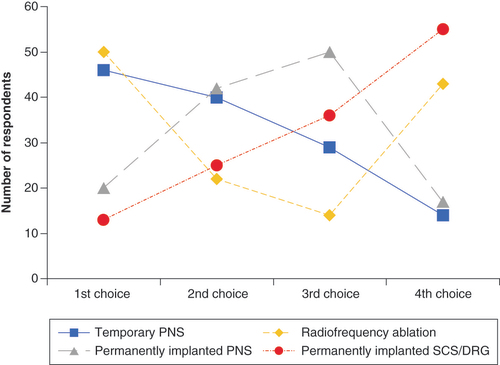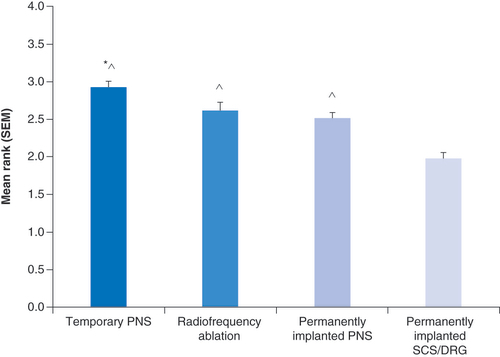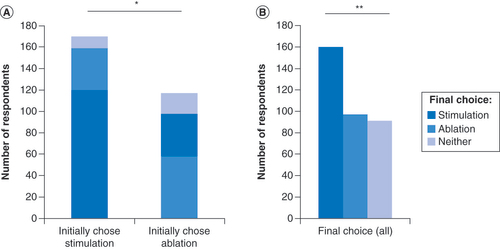Figures & data
PNS: Peripheral nerve stimulation; SCS/DRG: Spinal cord stimulation/dorsal root ganglion stimulation.

*p = 0.0008 versus permanently implanted PNS. ∧p ≤ 0.0001 versus permanently implanted SCS/DRGS.
PNS: Peripheral nerve stimulation; SCS/DRG: Spinal cord stimulation/dorsal root ganglion stimulation; SEM: Standard error of the mean.

Table 1. Treatment preferences among patients with lower back pain before and after follow-on details about temporary PNS and RFA.
Table 2. Treatment preferences after follow-on details.
Table 3. Demographic information for survey 2 respondents (n = 347).
(A) Initial and final choices of most desired treatment option among low back pain patients in Survey 1, stratified by their initial choice of Temporary PNS or RFA. Final choices reflect changes after additional information was provided about a potential side effect of each treatment option. p = 0.068. (B) Final choices of all low back pain patients who initially chose temporary PNS or RFA.
*p < 0.0001.
PNS: Peripheral nerve stimulation; RFA: Radiofrequency ablation.

Table 4. Treatment preference among respondents with low back pain after follow-on details.
(A) Initial and final choices of most desired treatment option among low back pain patients in Survey 2, stratified by their initial choice of stimulation or ablation. Final choices reflect changes after additional information was provided about a potential side effect of each treatment option. (B) Final choices of all low back pain patients who initially chose stimulation or ablation.
*p = 0.0007; **p = 0.0001.

